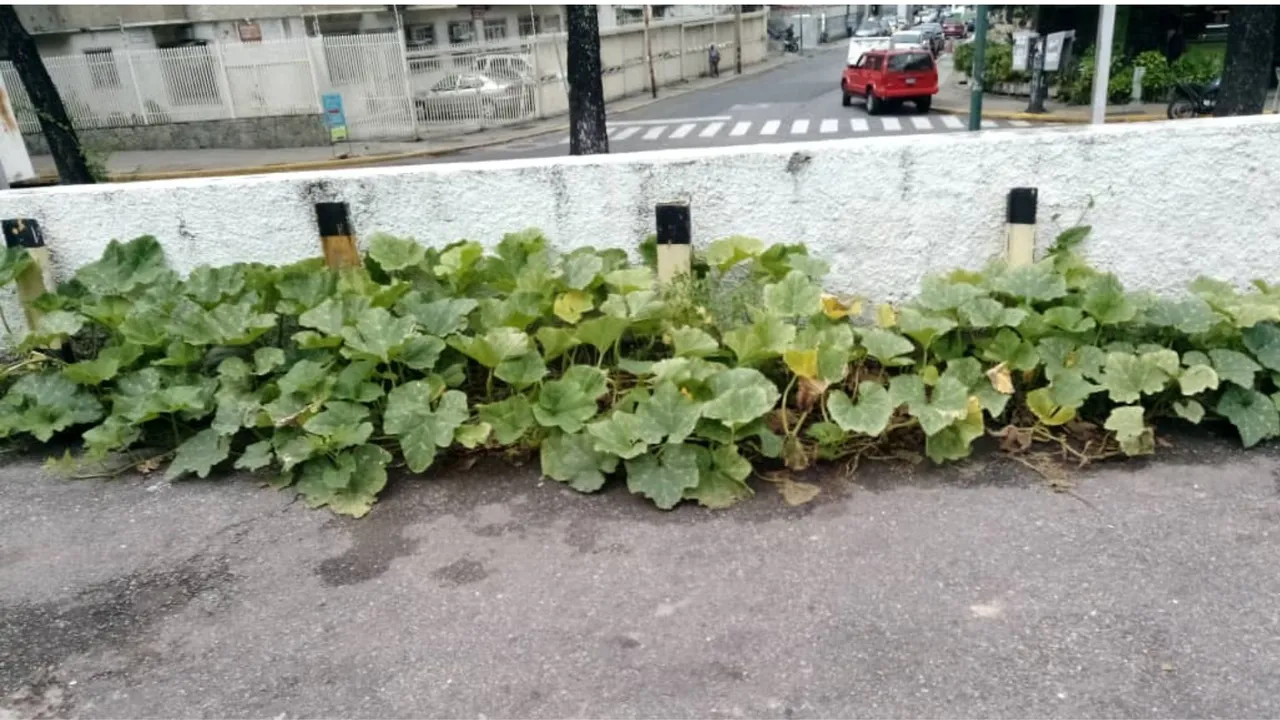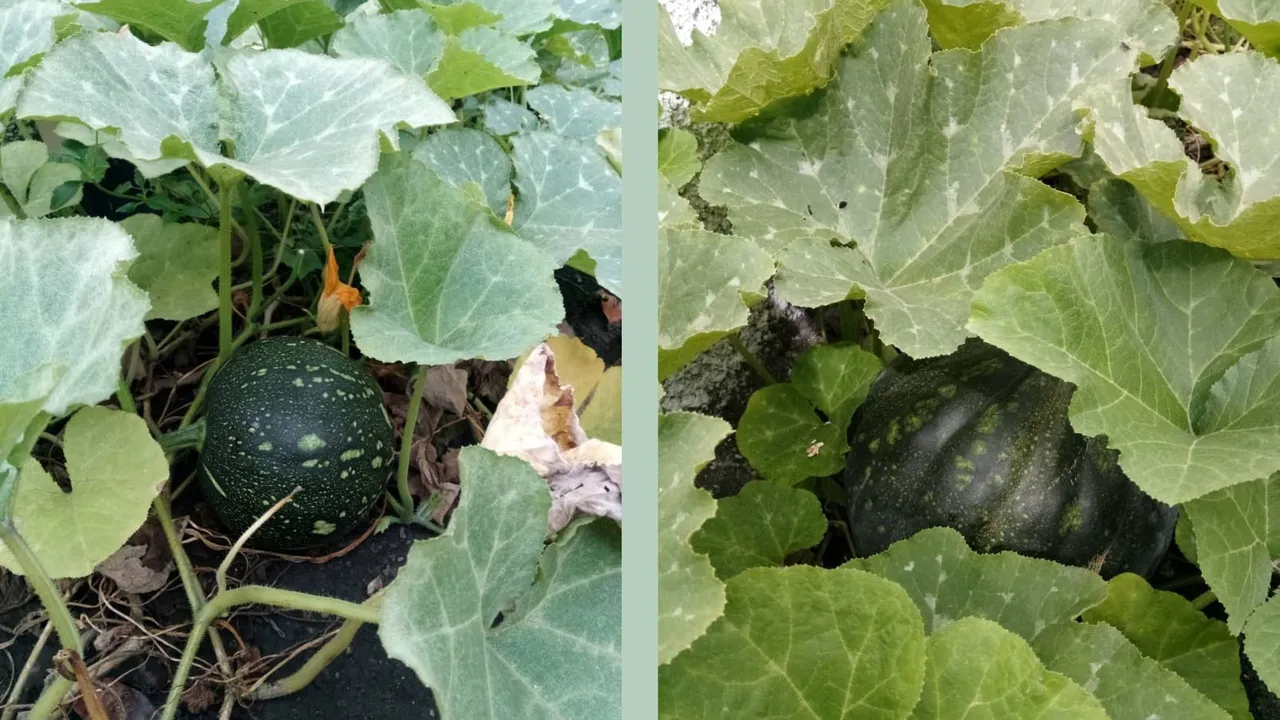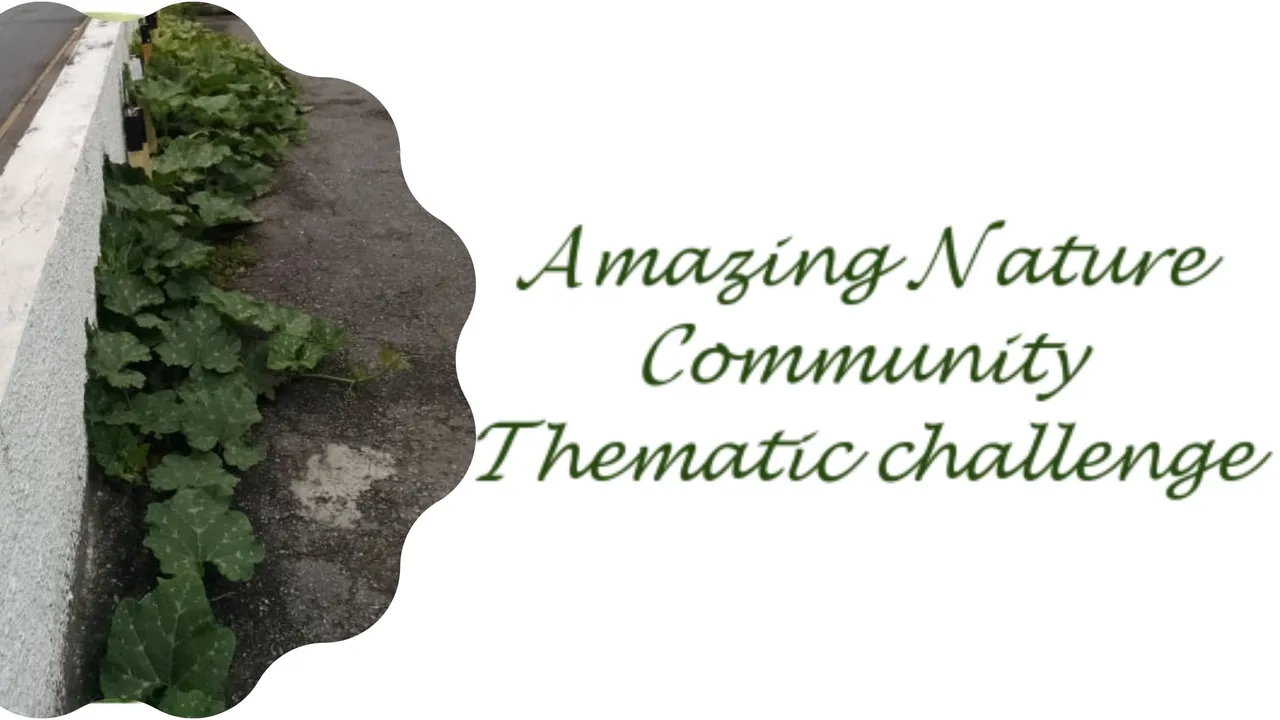Certainly nature surprises us, for it is born, grows and develops in inhospitable places, such as plants that grow between the partitions of a building or in a wall.

One wonders how it did it? The ability to adapt is incredible, which often leads me to think that no matter how much we humans want to invade its space, nature slowly and quietly takes back what rightfully belongs to it.
This week @bucipuci has proposed to look for something that surprises us about nature, in his Tematic Challenge - #3/7/21, click the link to read the contest rules and participate.
A month ago I had to go to a doctor's office, while I was in the parking lot something caught my attention and that is that an ahuyama plant was growing at the apex of the wall and the asphalt.

I was amazed to see the roots coming out between the wall - asphalt junction, how is it possible I wondered, since the parking lot is elevated about two meters above ground level. I imagine that part of the backfill of the parking lot is composed of dirt, stones and concrete.
I did some research on the internet and discovered that the ahuyama grows in unprepared soil, the only thing it needs is water. Now I understand how this plant is in such an inhospitable place.
When I took the pictures I discovered with great happiness that it had flowers and two fruits, that is, the pumpkins in the process of ripening that would soon be ready to be harvested.

By the way, I love ahuyama, in soup, in cream, in drinks and desserts, they are delicious!
And so once again, the amazing nature has left me with a pleasant surprise, it flourishes wherever the minimum conditions exist and that is an example of adaptation that we should imitate.
Thank you very much for taking the time to read me. See you in future publications.
The photos are my own, edited in Canva.com // The banner was taken from the challenge post, edited in canva.com and with the photo of the ahuyama plant // Use Deepl.com, as translator.

AHORA EN ESPAÑOL
Ciertamente la naturaleza nos sorprende, pues nace, crece y se desarrolla en lugares inhóspitos, como por ejemplo plantas que crecen entre las separaciones de un edificio o en una pared.

Uno se pregunta ¿cómo lo hizo? La capacidad de adaptación es increíble, lo que muchas veces me lleva a pensar que la naturaleza por más que nosotros los humanos queramos invadir su espacio, ella lenta y silenciosamente vuelve a tomar lo que por derecho le pertenece.
Esta semana @bucipuci ha propuesto buscar algo que nos sorprenda de la naturaleza, en su Tematic Challenge - #3/7/21, pincha el enlace para leer las reglas del concurso y participa.
Hace un mes tuve que ir a un consultorio médico, mientras estaba en el estacionamiento algo me llamó poderosamente la atención y es que una planta de ahuyama crecía en el vértice de la pared y el asfalto.

Quedé maravillada al ver que las raíces salían entre la unión pared – asfalto, como es posible me pregunte, pues el estacionamiento está elevado unos dos metros sobre el nivel del suelo. Imagino que parte del relleno del estacionamiento está compuesto por tierra, piedras y concreto.
Me dediqué a investigar en internet y he descubierto que la ahuyama crece en tierras sin preparación, lo único que necesita es agua. Ahora entiendo como esta planta está en un lugar tan inhóspito.
Al tomar las fotos descubrí con mucha felicidad que tenía flores y dos frutos, es decir, las calabazas en proceso de maduración que pronto estarían en condiciones de ser cosechadas.

Por cierto, me encanta la ahuyama, en sopa, en crema, en bebidas y postres, son deliciosas!
Y así una vez más, la asombrosa naturaleza me ha dejado con una grata sorpresa, florece donde existan las condiciones mínimas y eso es un ejemplo de adaptación que deberíamos imitar.
Muchas gracias por tomar el tiempo para leerme. Nos vemos en futuras publicaciones.
Las fotos son propias, editadas en Canva.com // El banner fue tomado del post del challenge, editado en canva.com y con la foto de la planta de ahuyama // Use Deepl.com, como traductor.

